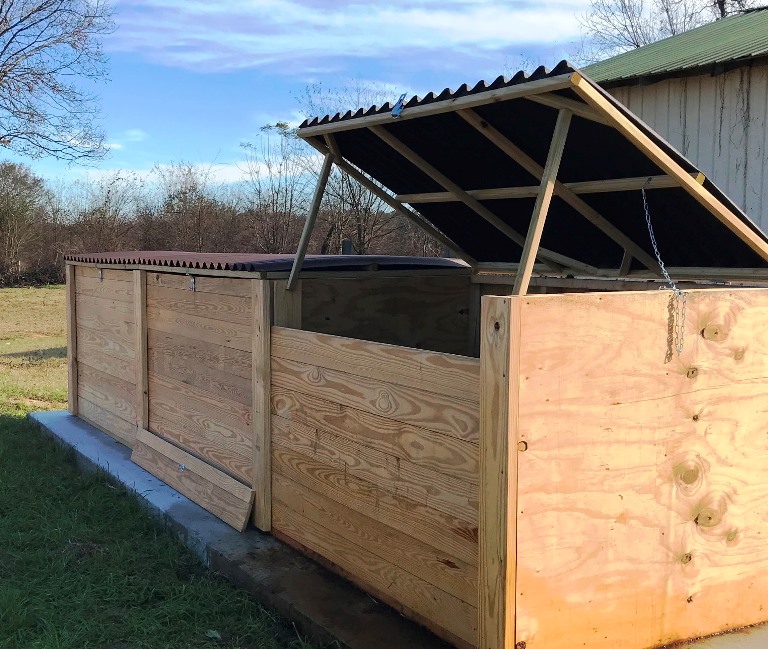What is Food Waste?
|
"Food waste, also called food residuals and source separated organics, comes from residential collection systems, grocery stores, universities, schools, restaurants, hotels, outdoor markets, fairs and festivals, farms, and warehouses.
Mixed food waste from these sources can include both pre- and post-plate waste, vegetables, fruits, meat, milk, condiment containers, soiled food wrappers, bottles and cans, plates and napkins, and other paper products, as well as coffee grounds." (1)
In an effort to reduce greenhouse gas generation, there is a growing emphasis on separating food waste from the municipal solid waste stream and keeping it out of our landfills. Composting food waste is a viable option to keep it out of the landfill and to produce a high-quality finished compost product that can sequester carbon in the soil (a win-win strategy).
One of the challenges with composing food waste is the variability of its composition. The following three photographs illustrate this point.
|
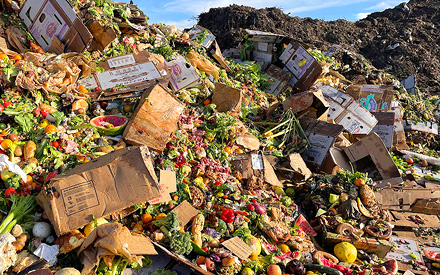 |
 |
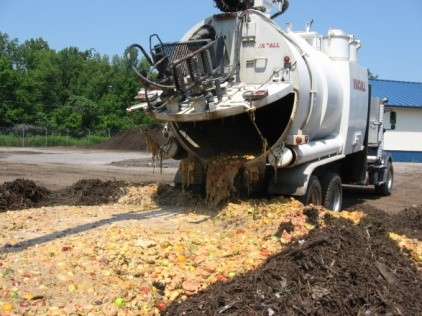 |
| Grocery waste with an abundance of cardboard and waste paper. |
Single source food waste (potatoes). |
Extremely wet food waste ("vegetable soup") |
|
"A second challenge with composting food waste is that it decomposes quickly and is attractive to flies, rodents, birds and other animals. It is often unsightly and can become odorous even before it arrives at the composting site. Therefore, some level of containment is necessary for food waste composting."
With Aerated Static Pile (ASP) Composting, the initial compost mix is prepared by blending the food waste with a bulking agent such as shredded yard waste. The pile is then constructed over a set of aeration pipes or a below-grade aeration system, and the outside of the pile is covered with a one-foot thick (minimum) layer of previously composted material, referred to as a biofilter cover or simply a bio-cover. This bio-cover serves to retain heat, minimize off-gassing of odorous compounds, and restrict access to flies and wildlife.
The following two photographs illustrate food waste compost piles.
|
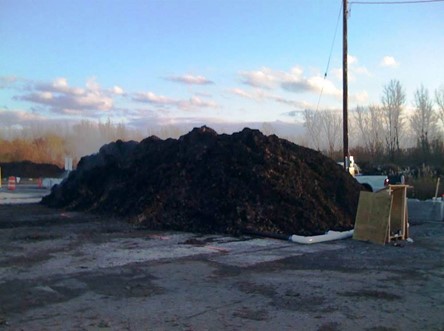 |
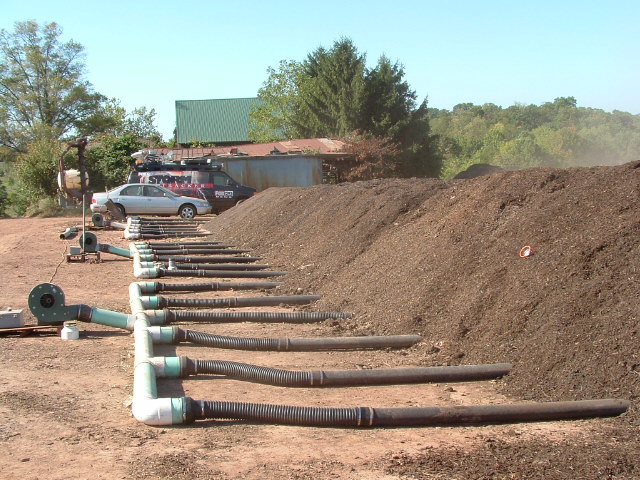 |
Free-standing ASP for the Onondaga County Resource Recovery Agency (OCRRA)
in Syracuse, New York |
Extended ASP at Two Particular Acres
compost facility in Royersford, Pennsylvania
|
(1) Reference: The Composting Handbook, edited by Dr. Robert Rynk (and many others), 2022
Composting 101
RULE 4: OXYGEN IS THE SECRET TO COMPOSTING
So that we don’t have to go into a long discussion about the microbiology and biochemistry and thermodynamics of composting, I am going to ask you to trust me when I say,
”Aerobic composting optimizes the biology of the composting system, expedites the composting process, produces heat that we use to destroy pathogens, parasites and weed seeds, and results in a high-quality finished product.”
Aerobic composting means that the oxygen level in the compost pile is maintained at 10% or higher (the air we breathe at sea level contains about 20% oxygen).
Most people believe that a compost pile needs to be turned from time to time to reintroduce oxygen into the mix. This does work but only for a very short period of time. The oxygen in the freshly turned active compost pile is consumed very quickly and drops well below 10% within 30 to 45 minutes. Turning the compost pile is a lot of work for very little gain.
With an O2Compost System, an electric blower delivers air to the base of the pile every 20 to 30 minutes to replenish the oxygen in the mix. The blower is operated by a timer that is typically set to turn ON from 30 seconds to 2 minutes. What is the perfect timer setting? (See Rule 3).
The blower cycles On and Off 24 hours a day, 7 days a week for the first 30 days of composting without having to “fire up the tractor”. It will happen even when you are on vacation. Now that’s what I call multi-tasking.
To prove this to yourself, all you need to do is: 1) fill up a compost bin with your initial mix of materials; 2) take a temperature reading to get your starting point; and then 3) turn the blower / timer ON. Within 12 to 24 hours you will see the pile temperature quickly climb 30o to 50oF. This is my absolute favorite thing about aerated composting. I will never get tired of seeing this happen.
|
|
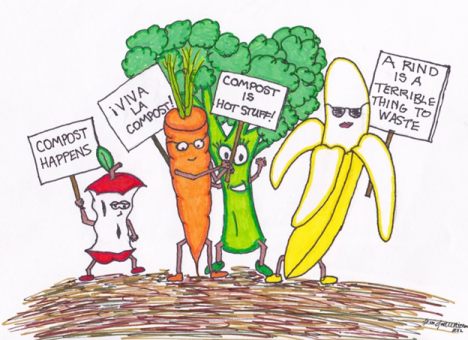 |
|
Client Testimonial
Joe Hoffman
Hoffman Composting - Johnson City, TN
Composting Since: 2014
|
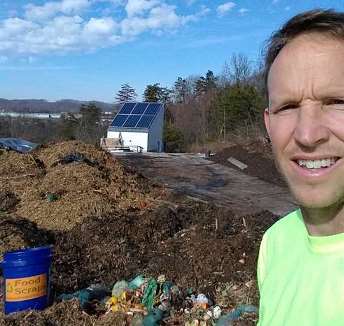 |
|
"In addition to household food scraps, I collect and process pre- and post-consumer food residuals from restaurants, coffee shops, a juice bar, and East Tennessee State University. This includes meat, cheese, breads ... you name it! I also use municipal leaves and wood chips in my mix.
Even though I had already had a fair amount of experience with composting, paying O2Compost for consulting was one of the best decisions I made. They freely share their wealth of technical knowledge, and they are extremely quick to respond. O2Compost's input during the design and permitting stage, and their continued support since the beginning of my operation, have been invaluable. I strongly encourage you to contact them!"
|
New Micro-Bin System
|











